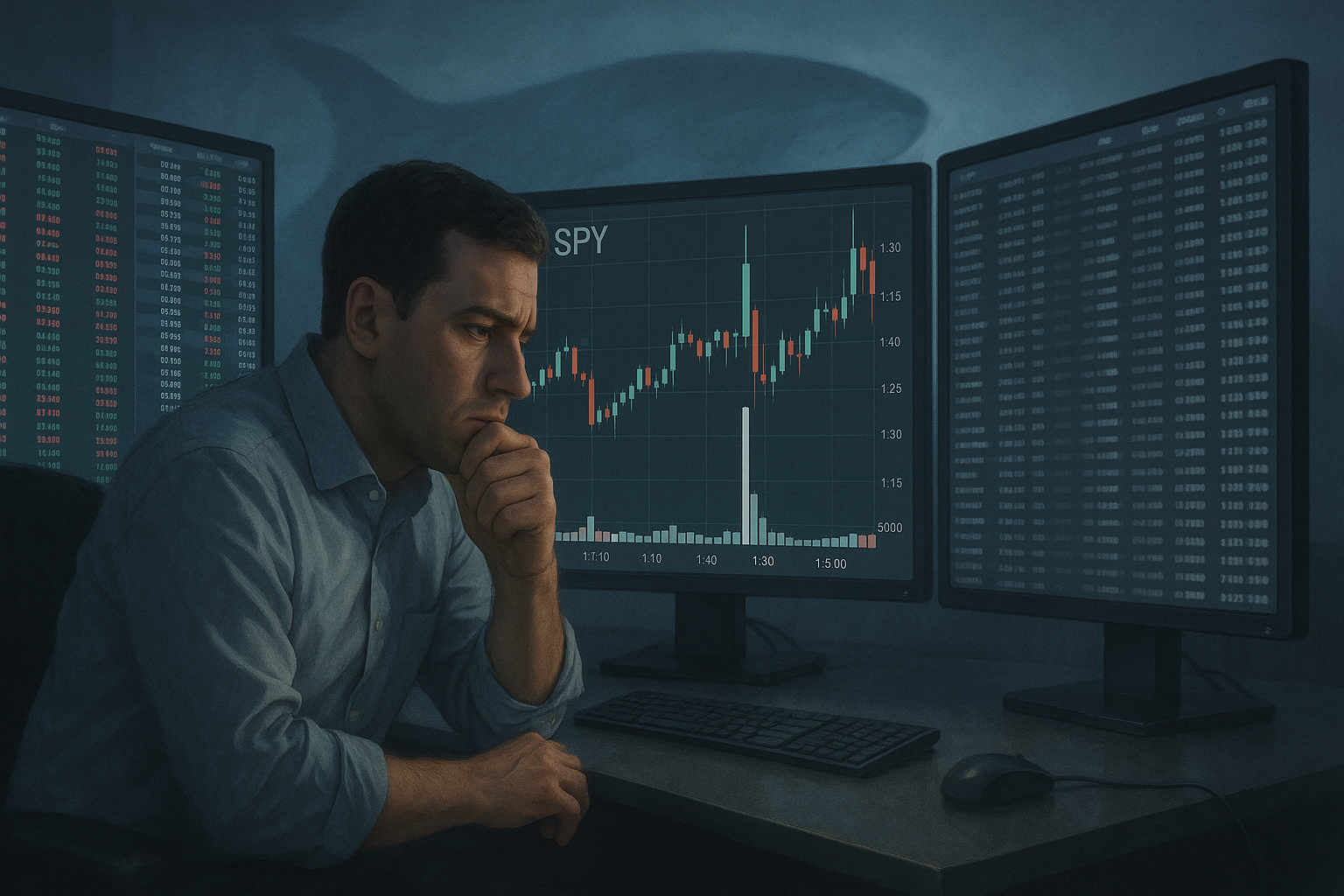Yesterday at exactly 1:50 PM Eastern, something strange happened in the market that made me do a double-take at my monitor. Someone—or something—moved a staggering 1.7 million shares of SPY in just two minutes flat. That's roughly $890 million worth of America's most liquid ETF, executed in less time than it takes to order a coffee at a busy Starbucks.
These massive liquidity surges seem to be happening more and more lately. You're watching the standard midday market malaise, then BAM—a tsunami of volume hits and everything moves in lockstep. It's eerily coordinated, like watching a flock of birds suddenly change direction mid-flight.
Hunting the Elusive Market Whale
So who's behind these moves? That's what everyone wants to know, and frankly, it's a question I've been chasing for years covering market structure. The problem is, today's markets are specifically designed to hide these footprints.
Level 2 data shows you the order book, sure. But that's like seeing the puppet without spotting the puppeteer. And those quarterly 13F filings from hedge funds? Please. By the time those come out, whatever happened yesterday will be ancient history.
The truth is messier. Big institutional players spend millions on algorithms designed to disguise their trading patterns. They slice massive orders into thousands of smaller pieces, routing them through a maze of venues. It's like trying to figure out who ate the office donuts when everyone has powdered sugar on their shirts.
The ETF Illusion
What makes these volume explosions in ETFs particularly fascinating (and a bit concerning) is how ETFs themselves work. When someone moves $890 million of SPY in minutes, they're effectively touching every single S&P 500 company simultaneously.
Think about that for a second. One click now moves half a billion dollars across Apple, Microsoft, Amazon, and hundreds of other companies. We've created a financial superhighway where liquidity appears abundant—until it isn't.
I remember reporting during March 2020 when this illusion temporarily shattered. High-grade bond ETFs were trading at wild discounts to their NAVs because the underlying bond market essentially froze. The map suddenly didn't match the territory.
The Lineup of Usual Suspects
Having tracked these flows for years, I've developed a mental list of the typical players who might move markets this dramatically:
Big passive funds rebalancing. Vanguard or BlackRock deploying a fresh wave of 401(k) contributions.
Risk-parity players adjusting exposure. These folks scale positions up or down based on volatility metrics.
Options dealers hedging. Someone puts on a massive options position, and the dealer on the other side has to buy or sell shares to stay neutral.
Central banks. Though the Fed doesn't trade SPY directly, sovereign wealth funds and foreign central banks certainly do.
Asset allocators making their move. Think pension funds shifting from bonds to stocks... or vice versa.
Each leaves different fingerprints. Risk-parity tends to hit multiple asset classes at once. Options-related flows cluster around expiration dates. Passive flows often happen near the close.
What It All Means
Look, maybe more important than who did this is what it tells us about how markets function now. We've built a system where liquidity doesn't flow—it floods. Markets don't gradually discover prices anymore; they lurch from one liquidity event to the next like a drunk stumbling between lampposts.
This creates a weird situation for traders. Do you position yourself to profit from these predictable-but-unpredictable waves? Or do you get out of the way, knowing these moves often have nothing to do with actual news or company fundamentals?
I've talked to dozens of traders about this phenomenon over the years. The smart ones watch for patterns in these volume spikes. Do they happen at predictable times? Do prices quickly snap back or establish new levels? Is there a sector rotation component?
The whales may swim in the dark, but they leave wakes you can study.
And that's perhaps the real lesson here. In a market increasingly dominated by algorithms and systematic flows rather than traditional stock picking, understanding the plumbing matters as much as understanding the businesses.
Sometimes, the pipes are more important than the water.
